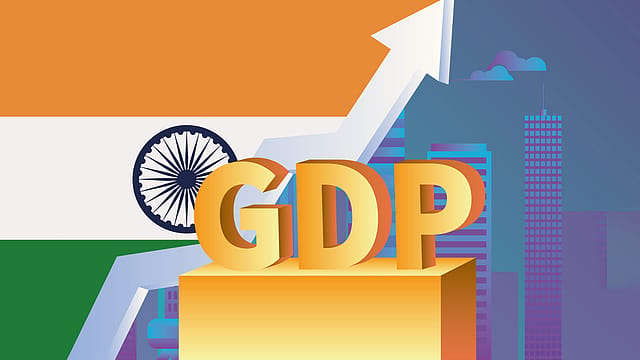Ukraine war, inflation, rate hike unlikely to derail Indian economy: Moody's
ADVERTISEMENT

Moody's Investors Service on Tuesday said it does not expect the Russia-Ukraine conflict, higher inflation, and the tightening financial conditions to derail India's ongoing recovery from the pandemic in 2022 and 2023.
While Moody's has retained its sovereign rating for India at Baa3 with a stable outlook, it revised downwards its real GDP growth forecast to 7.6% for the year ending March 2023.
The stable outlook, according to Moody's, reflects that the risks from negative feedback between the economy and financial system are receding. "With higher capital buffers and greater liquidity, banks and nonbank financial institutions (NBFIs) pose much less risk to the sovereign than we previously anticipated, facilitating the ongoing recovery from the pandemic," the ratings agency says.
The credit profile of India reflects key strengths including its large and diversified economy with high growth potential, a relatively strong external position, and a stable domestic financing base for government debt, says Moody's.
The very large domestic market has provided strong demand-driven growth, helping to shelter the economy from fluctuations in external demand, it adds.
December 2025
The annual Fortune 500 India list, the definitive compendium of corporate performance, is out. This year, the cumulative revenue of the Fortune 500 India companies has breached $2 trillion for the first time. Plus, find out which are the Best B-schools in India.
While risks stemming from a high debt burden and weak debt affordability remain, Moody's expects that the economic environment will allow for a gradual narrowing in the general government fiscal deficit over the next few years, avoiding further deterioration in the sovereign credit profile.
India's principal credit challenges include low per capita income, high general government debt, low debt affordability and limited government effectiveness, according to Moody's.
Still, the ratings agency expects India to be the fastest growing economy among its G20 peers in both 2022 and 2023.
The downward revision of real GDP growth assumes that higher inflation, rising interest rates, uneven distribution of monsoons, and slowing global growth will dampen economic momentum on a sequential basis, says Moody's.
"We expect inflationary pressures to weaken in the second half of 2022 and further into 2023," it says.
Climate change worry
Moody's also cautioned that India's economy is highly exposed to climate change risks. Monsoon rains are critical for the agricultural sector, given that almost half the country's farm land is unirrigated.
"Excessive use of groundwater – driven by rapid economic and population growth – and rising temperatures have contributed to significant water scarcity challenges. The magnitude and dispersion of seasonal monsoon rainfall vary each year and influence agricultural sector growth, food price inflation and consumption – particularly given that half of India's overall consumption comes from the rural sector and many rural incomes are dependent on agriculture," says the ratings agency.
While rising, India's still low incomes limit households' capacity to absorb shocks, whether domestic, external or weather related, says Moody's. This could exacerbate stresses from uneven distribution of income given the large proportion of the labour force employed in the informal sector, and in agriculture.
India's per capita income increased to about $7,300 on a purchasing power parity-adjusted basis in 2021 from around $4,500 in 2011, but remains much lower than the Baa-rated median of more than $27,000 in 2021, says Moody's.
